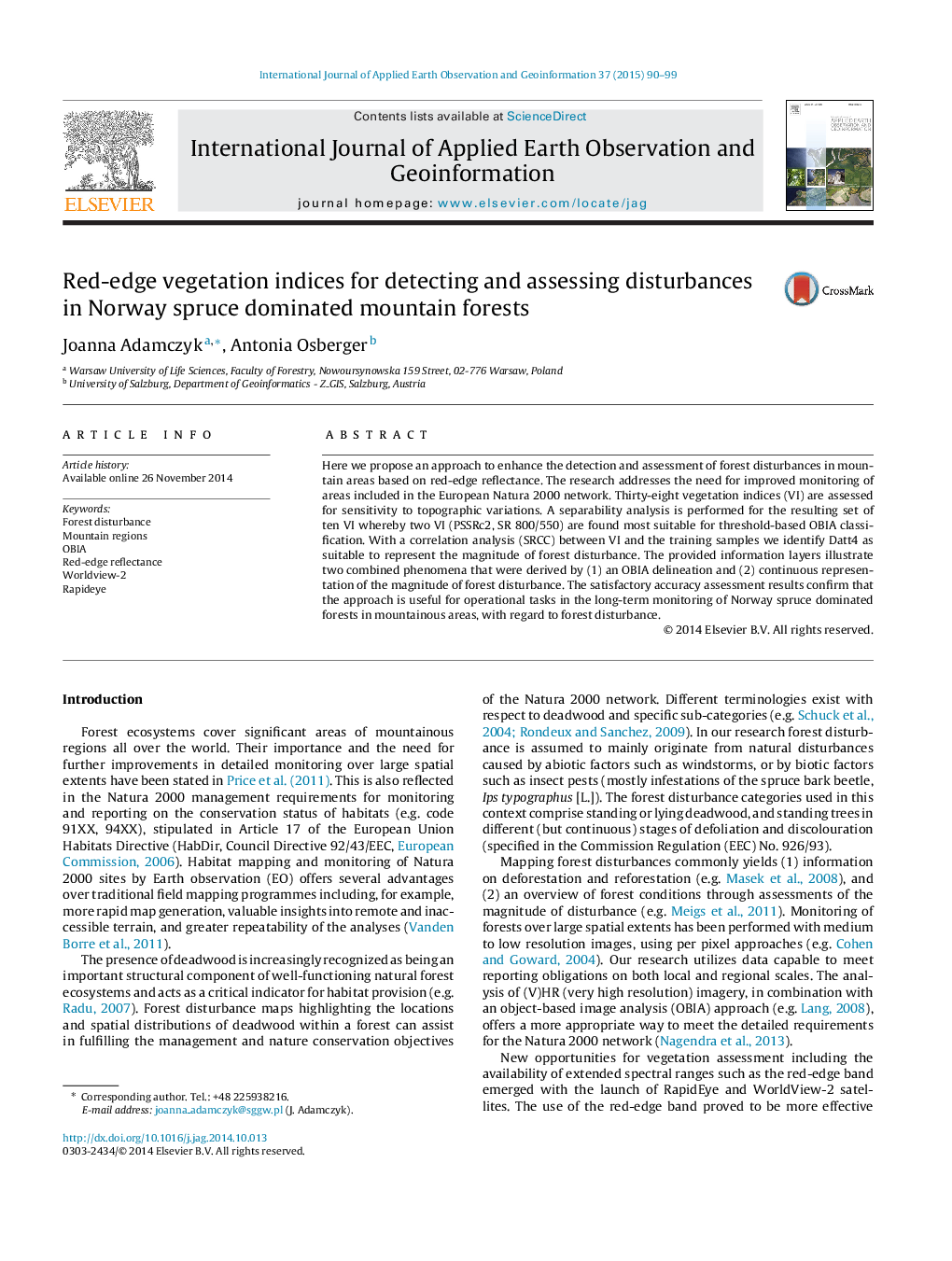| Article ID | Journal | Published Year | Pages | File Type |
|---|---|---|---|---|
| 6348786 | International Journal of Applied Earth Observation and Geoinformation | 2015 | 10 Pages |
â¢An object-based approach for detecting forest disturbances in mountainous regions.â¢The delineation of forest disturbance areas and magnitude of forest disturbance.â¢The two types of information are combined in a single information layer.â¢The near infrared vegetation indices are suitable for deadwood extraction.â¢Best results for forest disturbance magnitude are achieved with red-edge indices.
Here we propose an approach to enhance the detection and assessment of forest disturbances in mountain areas based on red-edge reflectance. The research addresses the need for improved monitoring of areas included in the European Natura 2000 network. Thirty-eight vegetation indices (VI) are assessed for sensitivity to topographic variations. A separability analysis is performed for the resulting set of ten VI whereby two VI (PSSRc2, SR 800/550) are found most suitable for threshold-based OBIA classification. With a correlation analysis (SRCC) between VI and the training samples we identify Datt4 as suitable to represent the magnitude of forest disturbance. The provided information layers illustrate two combined phenomena that were derived by (1) an OBIA delineation and (2) continuous representation of the magnitude of forest disturbance. The satisfactory accuracy assessment results confirm that the approach is useful for operational tasks in the long-term monitoring of Norway spruce dominated forests in mountainous areas, with regard to forest disturbance.
Graphical abstractDownload high-res image (261KB)Download full-size image
